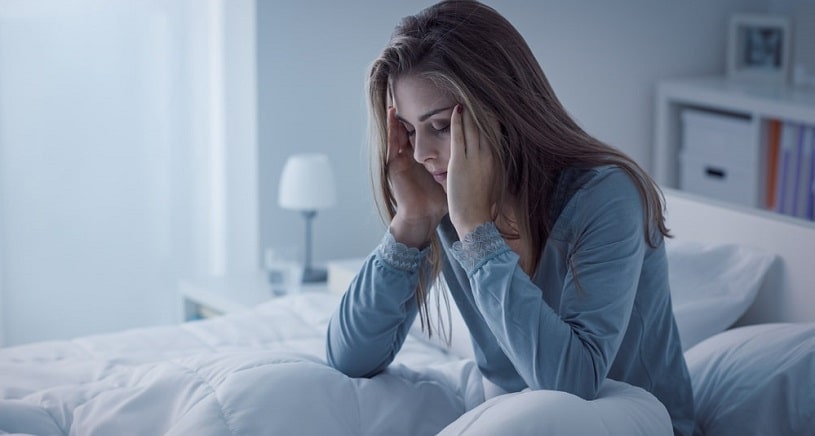Valium is the trade name for a type of drug that belongs to the benzodiazepine class of drugs. The substance, also known as Diazepam, is available as a prescription drug and is one of the most abused prescription drugs on the market today. Found today as one of more than 500 brands sold worldwide, it quickly causes addiction due to the calming effects that come from taking it. Diazepam addiction is, thus, a real challenge to persons exposed to the substance.
Table Of Contents:
Valium addiction treatment is recommended for persons with any dependence level as continued use can lead to higher tolerance levels, greater dependence, and more severe effects. This article tackles how to end Valium addiction through understanding the problem and seeking timely professional treatment.
What Is Valium?
Valium generic name is Diazepam; it is a benzodiazepine that produces a calming effect and can treat various mental health conditions. The medication is widely prescribed despite being heavily controlled. Valium is used to treat anxiety, withdrawal from alcohol, muscle spasms, seizures, sleep disturbances, and restless leg syndrome.

More About Benzodiazepines:
Diazepam acts by enhancing the effect of the neurotransmitter gamma-aminobutyric acid (GABA.) It has a depressing effect on the CNS, resulting in a feeling of peace and tranquility. It can lead to drowsiness or weariness in some, so it is often taken as a cure for insomnia. Valium addiction will occur if the drug is taken at higher doses or frequencies than what is prescribed.
Diazepam can cause symptoms similar to those of consuming too much alcohol when taken in higher doses. It must also be kept in mind that Diazepam can stay in the system for quite a while. Its half-life is 43±13 hours, and some of its active metabolites have a half-life of up to 100 hours. It’s important to remember if the person prescribed Diazepam operates heavy machinery or is planning to become pregnant. This drug provides help for many people, but it can sometimes cause drug addiction. This risk is higher in people who have an existing substance use disorder.
Valium Statistics
Anxiety has become a relatively common mental condition, with about 31% of U.S. adults having experienced any anxiety disorder at some point in their lives. This is according to the National Institute on Mental Health. Among adolescents, this number is even higher, being around 32%.

The information about the prevalence of anxiety disorders shows that the demand for anti-anxiety medications like Valium or Xanax is growing. According to the American journal of public health, between 1996 and 2013, the number of adults filling a benzodiazepine prescription increased by 67%, from 8.1 million to 13.5 million. In 2008, an estimated 5.2% of Americans got one or more benzodiazepine prescriptions.
As published in the 2016 research, 12.5% of U.S. adults used benzodiazepines that year, which is around 30 million people.
Is Valium Addictive?
Valium drug is part of the benzodiazepine class of medications. Like all other medications in this class, its users are known for developing tolerance to the medication and becoming addicted. In most cases, the drug is only prescribed for short-term use, but there are cases where patients have been prescribed Valium medication for decades.
Diazepam is addictive for a couple of reasons. First, although it is prescribed legitimately, Valium addiction potential increases because the drug becomes less effective over time. It often leads to dependence as users up their dosage to achieve the same effect. What is worse, among the side effects of Valium addiction is increased anxiety, which can lead users into a deadly cycle of trying to counteract side effects by using more and more of the drug.
However, Valium drug abuse can also occur because the user likes how the medication makes them feel. In these cases, diazepam abuse may start as mental dependence with physical dependence following.
Addiction And Abuse Signs
Valium drug addiction occurs when someone becomes dependent on the drug for day-to-day function. Troubling symptoms may occur when a user hasn’t had a dose in a while. Valium addiction symptoms can be both physical and psychological. It’s essential that users and their loved ones can spot both types of signs.
Psychological Signs of Diazepam Abuse
While psychological symptoms can help users and their loved ones determine if a Valium addiction is present, they are often harder to identify. Aside from the most severe psychological signs of use, they tend to be easy to hide and can be contributed to the underlying conditions being treated.
The Psychological Signs Include:
- Intense feelings of happiness
- An overwhelming sense of calm
- The absence of stress even in highly upsetting situations
- Mood swings, depression, and anxiety
- A feeling of intoxication
- Altered states
- Confusion
- Hallucinations
- Depression
- Insomnia
- Nightmares
While these are all Diazepam symptoms of abuse, these signs are not enough to determine that Diazepam is the cause. However, they do indicate that addiction of some sort is present. Most of these signs will be found in those addicted to any CNS depressant, including Diazepam, other benzodiazepines, opioids, and alcohol.
No matter the cause, if these symptoms are observed, the user needs help and professional care.
Physical Symptoms of Diazepam Abuse
Diazepam, like any medication, naturally has physical side effects. However, when the medication is abused, these side effects become more pronounced. Because there are so many use signs, it is generally easy to realize they are not related to underlying physical conditions. Additionally, as these physical symptoms worsen, they are nearly impossible for the user to hide from others.

The most obvious physical signs will be those related to central nervous system functions. Some of these are expected to be present with prescribed use, even short-term. However, they should not be severe. It is often the severity that is the key to recognizing signs of Valium drug abuse. If a patient struggles to remain awake, seems to lack awareness when awake, is taking slower or more shallow breaths, or experiences tremors, they need help. If they express that they are struggling with vision troubles or incontinence, these are also signs that their abuse of the medication is starting to impact their central nervous system.
Physical Signs of Diazepam Abuse Include:
- Queasiness and vomiting
- Struggles with remaining conscious
- Being conscious but not aware
- Headaches
- Dry mouth
- Constipation
- Skin reactions
- Slow breathing
- Decreased heart rate
- Low blood pressure
- Dizziness
- Loss of appetite
- Intestinal distress
- Shakes
- Slurred speech
- Blurred vision
- Incontinence
- Seizures
Having developed tolerance to the medication, the user may seek ways to amplify its effect and start mixing Diazepam with alcohol or other substances. This is a dangerous practice, as alcohol is a depressant, and combining two depressants together can lead to overdose.
Behavioral Deviations of an Addict
Because the user may be aware of their addiction and embarrassed that the physical symptoms are so obvious, they may start to pull away from friends and family. As such, behavioral signs may be the key to realizing there is a problem. Valium drug abuse tends to lead to numerous behavioral symptoms that are common to most drug addicts. As such, it may not be possible to determine that Valium is the drug the user is addicted to, but it’s possible to determine that an addiction is present.
Behavioral Symptoms of Valium Drug Abuse:
- Increased agitation and irritability, often lashing out at friends and family
- Taking large numbers of Diazepam pills or more often than recommended
- Expressing fear of being unable to obtain the medication
- Talking about wanting to stop the drug but never doing so
- Spending significant time and mental energy on finding ways to get Diazepam
- Often bringing up the topic of Valium medication in conversation or talking about other similar drugs
- Withdrawing from work, school, friends, and family, potentially to hide their symptoms
- Often claiming to be sick
These symptoms are often the earliest exhibited, making it easier to get the user help before the addiction becomes severe. With the right interventions upon noticing diazepam abuse symptoms, full addiction recovery is possible. An addict can end the abuse and prevent overdose and other long-term complications.
Diazepam Withdrawal
When one uses it for more than four months in a row, there are greater chances to develop an addiction. The problem of addiction continues even after stopping the drug.
Sudden discontinuation usually causes a set of unpleasant health problems and withdrawal symptoms. Because every person is different, and so are the genetics, the severity and duration of withdrawal can vary significantly. Valium withdrawals are very common and need urgent medical attention and detox. Diazepam withdrawal symptoms start appearing within 72 hours of the last dose.
The Symptoms Include the Following:
- Cravings
- Stomach pain
- Headache
- Shaking
- Excessive sweating
- Loss of sleep
- Agitation
- Mental confusion
- Convulsion
- Increased anxiety
Also, one might feel other problems such as vomiting, high blood pressure, increased heart rate, and mood changes. If patients have any of these symptoms, they should find medical help right away.
Diazepam Withdrawal Timeline
The duration of Valium withdrawals is about a month and is divided into different parts. As a result, each step has a unique set of symptoms, which tend to fade after stopping the drug for some time.
- Acute Withdrawal Symptoms: These include unrest and stress, which begin to show within 72 hours of stopping the medication. Thus, as the span of the drug-free state continues, the symptoms become even more intense. They reach their peak power in the second week of the withdrawal. Lastly, loss of sleep, increased sweating, and muscle aches are typical acute phase features.
- Subacute Stage of Valium Withdrawals: This period of Diazepam withdrawal starts a month after the discontinuation. As a result, the symptoms are less intense and can be taken care of by standard measures.
- Chronic Stage: A fraction of the people who have abused Diazepam may have to bear the brunt even after years of quitting.
Common solutions such as healthy food, physical exercises, increased fluid intake, and non-prescription pills for symptomatic relief may not always be enough to cure the condition. In addition to the conventional remedies, patients will need a specific addiction-targeted detox program to ensure recovery and drug-free life.
Valium Addiction Treatment
For a person with abuse signs and symptoms, the best thing to do is find Valium addiction treatment immediately. Timely intervention may prevent further escalation of the habit that may be at the tolerance level. Like other benzodiazepine drugs, Diazepam, if left untreated, can progress from tolerance to physical and psychological addiction and finally escalate to a substance use disorder. To prevent progression, a person hooked to Diazepam must seek Valium addiction treatment, which will determine the level of addiction and the best course of treatment.

Caught early, treatment is effective, and withdrawal symptoms easier to manage.
It’s important to note that quitting the substance cold turkey is not advisable. Stopping this way may also lead to dangerous relapses that may transform a mild habit into a serious one coupled with drug-seeking tendencies and a willingness to do anything to get the drug.
Valium Inpatient and Outpatient Rehabs
Once it is clear a person may have an addiction, the first step of treatment is to find a suitable rehab center. Rehab centers offer different diazepam treatment care options that cover comfort, financing, access to the outside world, and so on. If the person has a mild habit, a less intensive program such as an outpatient program may be of benefit. More severe cases may benefit from residential inpatient programs that offer more support. Going through all these details, the person will take the first steps on a journey that may help them kick the Valium habit and return to a life of productivity and normalcy.
Inpatient Rehab
During the intake process, the rehab center will offer two options: inpatient rehab or outpatient rehab center. Inpatient rehab is recommended for persons with a dangerous habit.
The rehab program will remove them from the environment that may be enabling the habit. This is especially important for Valium addiction treatment as the substance is available both legally and illegally.
Keeping the person at a residential inpatient rehab center will also keep them safe once the withdrawal symptoms kick in. How long the stay will last depends on several factors, including progress made, the person’s psychological and mental condition, and the doctor’s recommendations.
Outpatient Rehab
An outpatient rehab center is best suited for treating mild cases. These are cases where a person has formed a habit of taking prescription-level quantities of Valium. As Valium medication is used to treat several conditions, this level of addiction can happen to anyone undergoing treatment with Valium. An outpatient treatment center will involve careful scaling-down of the dosage or complete stoppage. Visits to the rehab center will be scheduled to monitor the effects of withdrawing and provide support on the journey. If a person does not have a severe habit and does not have drug-seeking tendencies, an outpatient rehab program may be enough to get them to a successful recovery.
Starting Right Now
Valium abuse and abuse of prescription drugs, in general, can happen to anyone. If a person is being treated with Valium generic, they may form a dependence without knowing. There is nothing to feel guilty about. What is important is recognizing the problem for what it is and seeking help as soon as possible. Most persons getting treatment for mild Valium addiction can get off the drug after treatment as the drug does not have severe withdrawal symptoms at this stage. However, ignoring treatment can result in a more severe habit that would include psychological and behavioral dependence besides physical dependence. It will involve a more intensive course of treatment that may also take longer to bear.
If any level of addiction is suspected, it is best to seek a professional assessment immediately.
Frequently Asked Questions
Is Valium a Narcotic?
No, it is not. Valium is a benzodiazepine, and the term “narcotic” refers to opium, opium derivatives, and their semi-synthetic substitutes.
Is Valium an Opioid?
No, Valium falls under the category of benzodiazepines. These are psychoactive drugs with sedative, hypnotic, and muscle relaxant properties.
Is Valium a Muscle Relaxer?
Although it is not classified as such, sometimes Diazepam can be used as a muscle relaxant. However, it is not recommended because there are much better alternatives, which are less habit-forming.
What Schedule is Valium?
Valium is a Schedule IV drug under the Controlled Substances Act, meaning it has a low potential for abuse compared to Schedule III substances. However, it doesn’t mean that its use comes without risk for addiction.
Hope Without Commitment
Find the best treatment options. Call our free and confidential helpline
Most private insurances accepted
Page Sources
- Ali, S., Mouton, C. P., Jabeen, S., Ofoemezie, E. K., Bailey, R. K., Shahid, M., & Zeng, Q. (2011). Early detection of illicit drug use in teenagers. Innovations in clinical neuroscience, 8(12), 24–28. https://www.ncbi.nlm.nih.gov/pmc/articles/PMC3257983/
- Onyett S. R. (1989). The benzodiazepine withdrawal syndrome and its management. The Journal of the Royal College of General Practitioners, 39(321), 160–163. https://www.ncbi.nlm.nih.gov/pmc/articles/PMC1711840/
- Mellor, C. S., & Jain, V. K. (1982). Diazepam withdrawal syndrome: its prolonged and changing nature. Canadian Medical Association journal, 127(11), 1093–1096. https://www.ncbi.nlm.nih.gov/pmc/articles/PMC1862031/
- Wisconsin Department of Health Services. Valium: INFORMED CONSENT FOR MEDICATION. 2016. https://www.dhs.wisconsin.gov/forms1/f2/f24277v-valium.pdf
- National Institute on Mental Health, Any Anxiety Disorder, 2017. https://www.nimh.nih.gov/health/statistics/any-anxiety-disorder.shtml
- Bachhuber, M. A., Hennessy, S., Cunningham, C. O., & Starrels, J. L. (2016). Increasing Benzodiazepine Prescriptions and Overdose Mortality in the United States, 1996-2013. American journal of public health, 106(4), 686–688. https://doi.org/10.2105/AJPH.2016.303061
- National Institute on Drug Abuse, Research suggests benzodiazepine use is high while use disorder rates are low, 2018. https://www.drugabuse.gov/news-events/science-highlight/research-suggests-benzodiazepine-use-high-while-use-disorder-rates-are-low
- Department of Justice/ Drug Enforcement Organization, Benzodiazepines (Drug Fact Sheet), 2020. https://www.dea.gov/sites/default/files/2020-06/Benzodiazepenes-2020_1.pdf
- DEA, Diversion Control Division, List of Controlled Substances, https://www.deadiversion.usdoj.gov/schedules/
- Drug Enforcement Organization, Narcotics (Opioids). https://www.dea.gov/taxonomy/term/331
- Maletzky B.M., Klotter J. Addiction to diazepam. Inf. J. Addict 1976; 11(1)95–115. https://www.tandfonline.com/doi/abs/10.3109/10826087109045533

 Authored by
Authored by  Reviewed by
Reviewed by 

